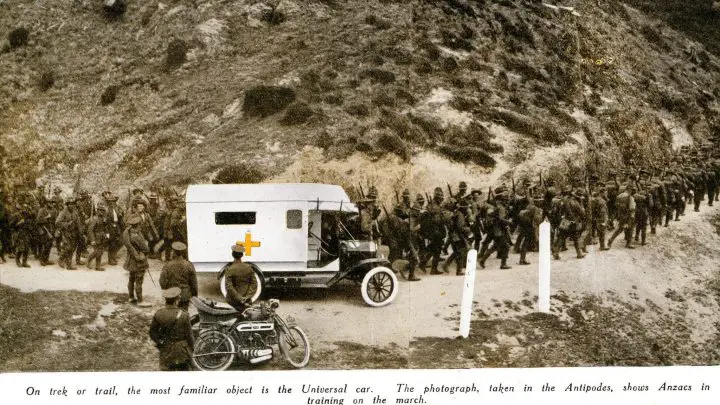While the Ford Model T might seem like a relic of a bygone era, its impact during World War I was undeniable, particularly in its role as a vital ambulance. The Red Cross recognized the Model T’s ruggedness and reliability, deploying a fleet of these vehicles to transport injured soldiers from the battlefields to hospitals. Despite their “jumpin’ bedsteads” nickname, due to the rough rides they provided, these ambulances proved crucial in navigating the challenging terrain of the war.

Ford Motor Company, in collaboration with the U.S. Surgeon General’s office, played a significant role in making the Model T ambulance a reality. Production took place in the U.S., France, and England, with thousands of these vehicles being shipped to the front lines. The first Model T ambulances were assembled in France, utilizing shipping containers for the body and adding canvas tops. These vehicles were used to transport wounded soldiers to an American hospital in Paris as early as 1914. An American soldier, who drove one of these ambulances, called the Model T “the mechanical marvel of the war.”
Ford’s efficient assembly line played a critical role in the rapid production and deployment of these ambulances. The company contributed a fleet of over 950 vehicles, valued at $500,000 USD (approximately $16 million USD when adjusted for inflation), which included touring cars, pickups, stripped chassis, and over 100 ambulances. In addition to these, Ford built and distributed 1,454 more vehicles for the Red Cross’s wartime efforts. The Model T’s versatility extended beyond ambulances, as its chassis and engines were adapted for use in tanks, machine gun vehicles, supply cars, water pumps, and electricity plants.

The Model T’s contribution to the war effort was highly praised. An unnamed U.S. Army veteran and Ford ambulance driver described its performance as “the most remarkable record of motor car service, of performance under seemingly impossible conditions, that has ever been made by anything on four wheels.” Ford’s commitment to wartime production continued into World War II, where the company developed the Ford Jeep prototype, the GP-No. 1, and the Richmond Assembly plant produced armored vehicles and other models for the front lines, further solidifying Ford’s role in supporting the war effort.

